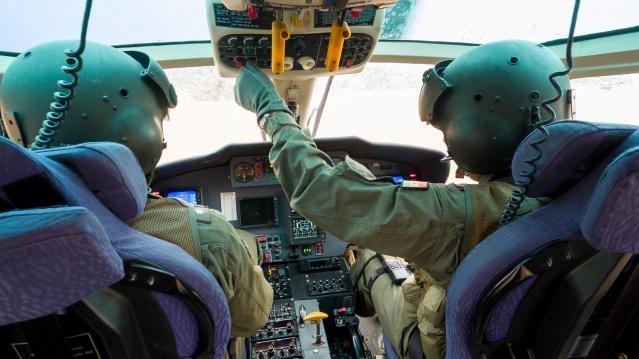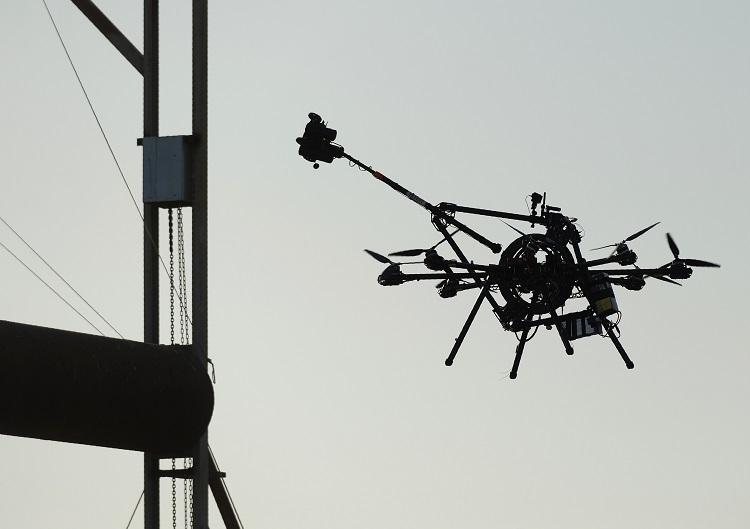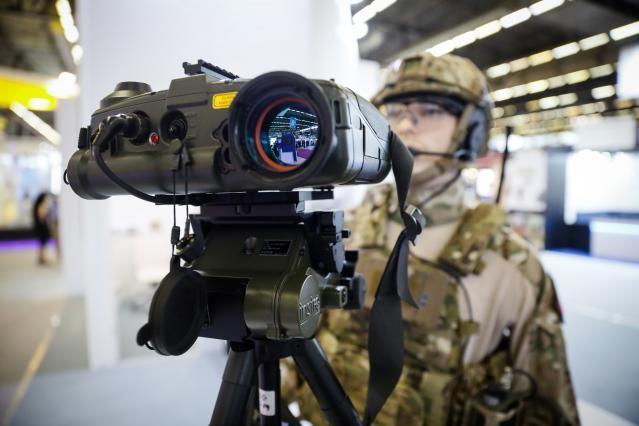
The European Union needs to become a stronger and more credible security provider, in our neighbourhood and beyond, with our partners but also alone when necessary. For that reason, EU countries are working together to tackle security threats and challenges more robustly, by adopting a common strategic vision for EU security and defence for the next 5-10 years.
Towards an EU framework for joint defence procurement
On 18 May 2022, the Commission and the High Representative presented an analysis of the defence investment gaps at the Versailles Summit. They also proposed further measures and actions necessary to strengthen the European Defence Technological and Industrial Base (EDTIB).
On 19 July 2022, the Commission adopted a proposal for a Regulation on establishing the European defence industry Reinforcement through common Procurement Act (EDIRPA) which seeks to act as a short-term financial instrument worth €500 million to incentivise common defence procurement among Member States.
This follows Russia’s unprovoked aggression against Ukraine, which has had significant implications for European defence, and has led to increased military spending by Member States. It also responds to the call made in the context of the Conference of the Future of Europe for stronger EU action in defence.
Measures to address the gaps

To help close existing defence investment gaps, the Commission and the High Representative set out a set of concrete measures. These are designed to strengthen European defence demand through joint procurement and to reinforce supply through measures targeting the support to industrial manufacturing capacities.
Defence Joint Procurement Task Force
In the immediate term, a Defence Joint Procurement Task Force has been established to work with Member States. This is to ensure a coordinated approach and de-conflict their very short-term procurement needs to face the new security situation. The Task Force will also facilitate coordination on military assistance to Ukraine.
EU instrument to reinforce defence industrial capabilities
A short-term EU instrument to reinforce defence industrial capabilities through common procurement has been proposed by the Commission in July 2022. This will support Members States to fill the most urgent and critical gaps in a collaborative way, based on the work of the Task Force. The Commission is ready to commit €500m of the EU’s budget over two years to incentivise Member States to address these needs in a collaborative way.
EU framework for defence joint procurement
This short-term instrument will pave the way to an EU framework for defence joint procurement: in the third quarter of 2022, the Commission will propose a European Defence Investment Programme (EDIP) regulation, which will in turn enable Member States to form the European Defence Capability Consortia (EDCC). Through EDCC, participating Member States will jointly procure defence capabilities that are developed in a collaborative way within the EU and will benefit from a VAT exemption. Additionally, associated EU financing may be provided for projects of high EU interest.
Additionally, to better define the defence capability priorities to focus on, the Commission and the High Representative propose to progressively move towards a joint EU defence programming and procurement function.
Enhanced European defence cooperation
Finally, enhanced European defence cooperation also requires a solid action plan to reinforce the European defence industrial capacity. To this end, the Commission will:
- carry out, in cooperation with the European Defence Agency, an in-depth mapping of current EU and necessary additional industrial manufacturing capabilities;
- propose a Critical Raw Materials initiative, including legislative measures, to facilitate, inter alia, defence industry access to Critical Raw Materials (CRMs), thereby strengthening the EU‘s resilience and security of supply;
- work on further measures to ensure the availability of defence specific skills for the industrial capacity ramp-up;
- consider possible amendments to the framework for dual-use research and innovation to improve synergies between civil and defence instruments;
- work on further measures (such as coordinated calls among existing EU instruments and EIB loans) to support critical technologies and industrial capacities by developing strategic projects;
- within the overall review of priorities in the mid-term review of the EU long-term budget, consider strengthening the budgets of the European Defence Fund and military mobility through the Connecting Europe Facility;
- speed up the establishment of the CASSINI for defence to attract new entrants and support defence innovation.
The EIB should also assess whether to enhance its support for the European defence industry and joint procurement beyond its ongoing support to dual use.
The proposed measures will make the EU a stronger international partner, also within NATO, which remains the foundation of the collective defence of its members.
Common strategic vision for EU defence
On 15 February 2022, the Commission put forward its further contribution to strengthening European defence. This includes a number of initiatives in areas that are critical for the defence sector and for security within the European Union, as well as a roadmap on critical technologies for security and defence. As such, the Commission is introducing new proposals towards a more integrated and competitive European defence market, in particular by further encouraging cooperation with and within the EU.
The Commission has, in particular, identified the following main new areas to further strengthen the competitiveness of the European defence market:
- explore how to further stimulate Member States investments in key strategic capabilities and critical enablers that are developed and/or procured in European Union cooperative frameworks
- further incentivise the joint procurement of defence capabilities developed in a collaborative way within the EU
- call upon Member States to continue moving towards streamlined and more convergent arms exports control practices, in particular for defence capabilities developed in an EU cooperative framework
By the end of 2022, the European Defence Fund will have invested €1.9 billion in defence research and capability development projects. This will kick-start key large-scale collaborative capability development projects while stimulating defence innovation. The Commission will explore additional incentives to stimulate Member States’ collaborative investments in strategic defence capabilities that are developed and/or jointly procured in EU cooperative frameworks.
Boosting European research and innovation and reducing strategic dependencies
The Observatory of Critical Technologies, currently being set up by the Commission, will
- identify, monitor and assess critical technologies for the space, defence and related civil sectors
- identify technology gaps, root causes of strategic dependencies and vulnerabilities
- create roadmaps of mitigation measures and inform decision-making and funding mechanisms
Further, on critical technologies, research and innovation, the Commission will:
- continue to enhance synergies between EU programmes and instruments on research and innovation. In particular, in 2023, the Commission will present an approach for encouraging dual-use research and innovation at EU level, targeting goods, technology and software that can be used for both civil and military purposes.
- invite Member States to commit to developing a coordinated approach to critical technologies in the context of the Strategic Compass for Security and Defence.
- support innovation and entrepreneurship in security and defence through a number of tools (e.g. incubator, investment blending facility, etc.), and by creating an EU Defence Innovation Scheme that brings these efforts under one umbrella.
- assess security and defence considerations more systematically when implementing and reviewing existing EU industrial and trade instruments or when designing new ones.

Joint procurement of European defence capabilities by EU Member States substantially increases the inter-operability of European national armed forces. It also supports the competitiveness of the technological and industrial base of the EU’s defence, notably through greater economies of scale.
In the upcoming years, the Commission will explore a number of instruments to incentivise the joint procurement of defence capabilities developed in a collaborative way within the EU, including by:
- proposing a Value Added Tax (VAT) waiver by early 2023
- setting up new financing solutions by mid 2023, and
- potentially reviewing the European Defence Fund bonus mechanisms.
Simplified and more coordinated export controls
While acknowledging that arms export control is a national competence, the Commission invites Member States to explore ways toward the streamlining and gradual convergence of their arms export and transfers control rules and practices, especially for those defence capabilities developed jointly.
By the end of 2022, the Commission will work with Member States to further facilitate the transfer of EU-funded defence products within the internal market.
Enhancing European resilience
Addressing today’s security challenges requires to enhance European resilience. The new Commission’s proposal aims to do this through key enabling initiatives, in particular to:

counter hybrid threats

strengthen cybersecurity and cyber-defence

boost military mobility

address climate change challenges related to defence
Timeline
- 3 May 2023
The Commission adopts the Act in Support of Ammunition Production (ASAP) to urgently deliver ammunition and missiles to Ukraine and to help Member States refill their stocks.
- 19 July 2022
Commission adopts a proposal for a Regulation on establishing the European defence industry Reinforcement through common Procurement Act (EDIRPA) for short-term common defence procurement.
- 18 May 2022
Communication on Defence Investment Gaps and measures to address them
- 24-25 March 2022
European Council and endorsement of the Strategic Compass
- 11 March 2022
Meeting of Heads of States and Government in Versailles
- 15 February 2022
Communication on European Defence
- 30 June 2021
Launch of the European Defence Fund
